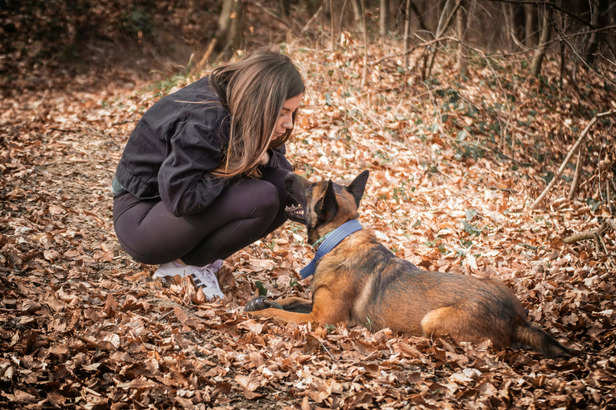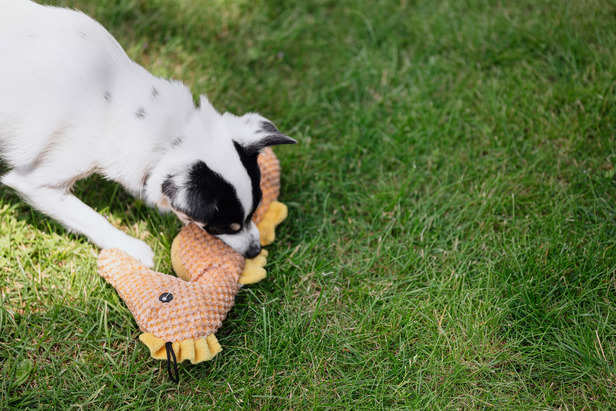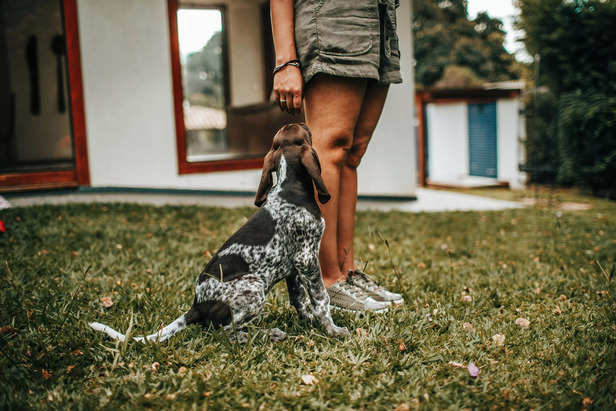How to Handle Aggressive Behavior in Pets Safely
Nikita Kanyal | Jan 23, 2025, 08:41 IST
Image Source : Pexels
Is your pet misbehaving? Aggressive actions can be frightening, but they don’t have to signify the end of your connection with your beloved pet! Find out the top advice to effectively manage your pet’s aggression, from maintaining composure to recognizing when it’s time to get professional assistance. Understand the reasons behind their behavior, train successfully, and establish a harmonious environment for you both. Don’t allow aggression to damage your relationship take charge today and change your pet into a well-mannered companion!
Pets are wonderful companions, but sometimes they can display aggressive behavior that surprises us. Whether it’s a growl, a snap, or a complete outburst, managing aggression can be stressful. However, with the appropriate approach, you can handle these situations safely and even avert them.
1. Comprehend the Reasons Behind the Aggression
Before taking action, it’s vital to grasp why your pet is displaying aggressive behavior. Aggression frequently arises from fear, discomfort, territorial instincts, or anxiety. Below are several common triggers:
Fear: Your pet might perceive a threat from unfamiliar individuals or situations.
Pain: Aggression can indicate that your pet is experiencing discomfort. A quick veterinary examination is imperative.
Territorial Instincts: Some pets can become protective over their food, toys, or territory.
Once you identify the underlying issue, you can more effectively tackle the problem.
2. Remain Composed and Prevent Escalation

When encountering an aggressive pet, your reaction is pivotal. Pets are very sensitive to their owner's feelings, and if you exhibit fear or rage, they may feel increasingly endangered. Keep your composure, take a deep breath, and refrain from shouting or making abrupt movements. A tranquil demeanor makes your pet feel secure and decreases the chance of heightened aggression.
Pro Tip: Speak softly and kindly to comfort your pet. At times, merely saying “It’s okay” can be incredibly effective.

At times, the most beneficial action is to provide your pet with space to relax. If they’re in a confined space, like a crate, slowly back off and let them have some time alone. Pets, especially fearful ones, need an escape route to feel secure. By stepping back, you’re helping them regain control of the situation.
4. Redirect Their Attention

Once both you and your pet are safe, try to redirect their attention. Offering a favorite toy or treat can help refocus their mind on something positive. This shift can break the cycle of aggression and lead to a calmer behavior.
Fun Fact: Puzzle toys are great for distracting pets. They’ll focus on solving the puzzle, not on their aggression!
5. Know When to Seek Professional Help
If your pet’s aggression continues or worsens, it may be time to consult a professional. A certified animal behaviorist or trainer can assess the situation and create a tailored plan to manage the aggression. Sometimes, underlying issues need to be addressed before progress can be made.
Seeking professional help isn’t a sign of failure it’s a proactive step to ensure your pet’s well-being.
6. Training and Socialization Are Key

Prevention is the best approach to handling aggression. Early training and socialization are essential in helping your pet grow into a well-adjusted adult. Exposing your pet to different environments, people, and other animals in a positive way will help them build confidence and reduce fear-based aggression.
Regular exercise is also critical. A tired pet is less likely to be aggressive, so ensure your furry friend gets enough playtime and physical activity.
Quick Tip: Basic commands like “sit,” “stay,” or “come” can be an effective way to reinforce positive behavior and improve your bond with your pet.
7. Be Patient and Consistent
Changing aggressive behavior won’t happen overnight. It takes time, patience, and consistency. Keep reinforcing good behavior and stay calm through the process. Every small improvement is a step in the right direction!
Aggression in pets can be daunting, but with patience, understanding, and the right approach, you can safely manage these situations. Whether it’s a sudden burst of aggression or an ongoing issue, the key is staying calm, identifying the cause, and getting professional help when needed. With time, training, and positive reinforcement, you and your pet can overcome any challenge together.
1. Comprehend the Reasons Behind the Aggression
Fear: Your pet might perceive a threat from unfamiliar individuals or situations.
Pain: Aggression can indicate that your pet is experiencing discomfort. A quick veterinary examination is imperative.
Territorial Instincts: Some pets can become protective over their food, toys, or territory.
Once you identify the underlying issue, you can more effectively tackle the problem.
2. Remain Composed and Prevent Escalation

Image Source : Pexels
When encountering an aggressive pet, your reaction is pivotal. Pets are very sensitive to their owner's feelings, and if you exhibit fear or rage, they may feel increasingly endangered. Keep your composure, take a deep breath, and refrain from shouting or making abrupt movements. A tranquil demeanor makes your pet feel secure and decreases the chance of heightened aggression.
Pro Tip: Speak softly and kindly to comfort your pet. At times, merely saying “It’s okay” can be incredibly effective.
3. Allow Your Pet Some Distance

Image Source : Pexels
At times, the most beneficial action is to provide your pet with space to relax. If they’re in a confined space, like a crate, slowly back off and let them have some time alone. Pets, especially fearful ones, need an escape route to feel secure. By stepping back, you’re helping them regain control of the situation.
4. Redirect Their Attention

Image Source : Pexels
Once both you and your pet are safe, try to redirect their attention. Offering a favorite toy or treat can help refocus their mind on something positive. This shift can break the cycle of aggression and lead to a calmer behavior.
Fun Fact: Puzzle toys are great for distracting pets. They’ll focus on solving the puzzle, not on their aggression!
5. Know When to Seek Professional Help
Seeking professional help isn’t a sign of failure it’s a proactive step to ensure your pet’s well-being.
6. Training and Socialization Are Key

Image Source : Pexels
Prevention is the best approach to handling aggression. Early training and socialization are essential in helping your pet grow into a well-adjusted adult. Exposing your pet to different environments, people, and other animals in a positive way will help them build confidence and reduce fear-based aggression.
Regular exercise is also critical. A tired pet is less likely to be aggressive, so ensure your furry friend gets enough playtime and physical activity.
Quick Tip: Basic commands like “sit,” “stay,” or “come” can be an effective way to reinforce positive behavior and improve your bond with your pet.
7. Be Patient and Consistent
Aggression in pets can be daunting, but with patience, understanding, and the right approach, you can safely manage these situations. Whether it’s a sudden burst of aggression or an ongoing issue, the key is staying calm, identifying the cause, and getting professional help when needed. With time, training, and positive reinforcement, you and your pet can overcome any challenge together.
